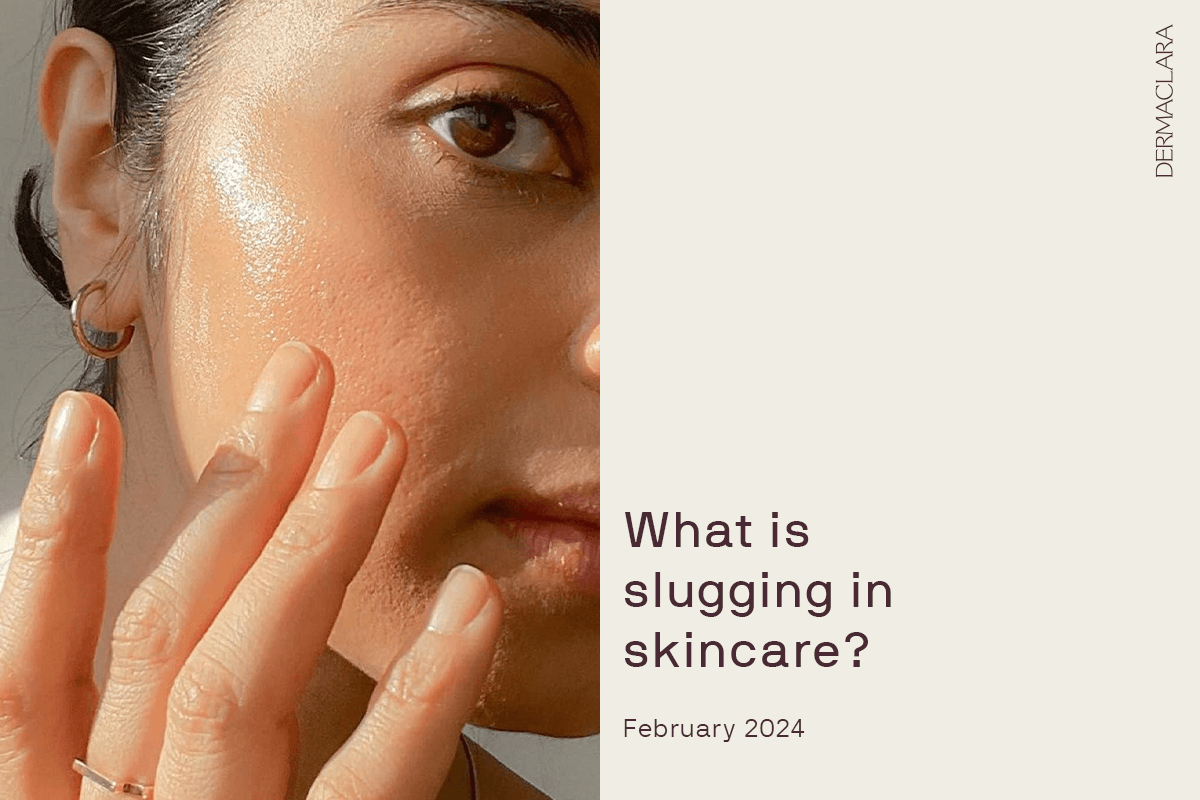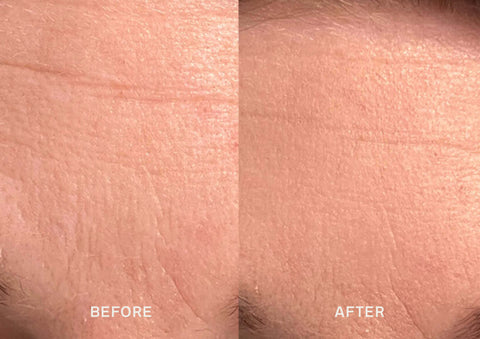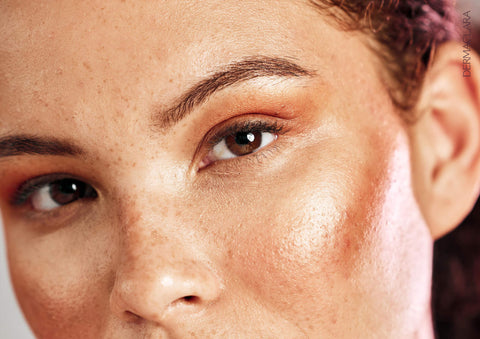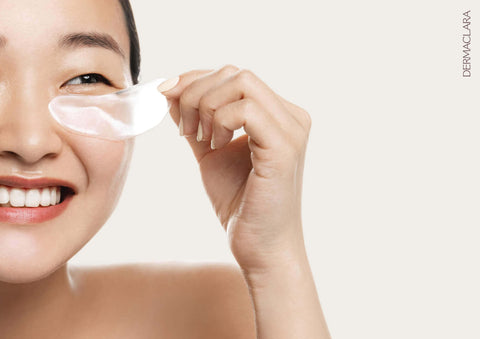What Is Slugging in Skincare

Slugging might sound weird, but this skincare technique is gaining popularity for its transformative effects. Slugging skincare involves creating a protective seal on your skin using a heavy occlusive, similar to how a slug leaves a trail. This occlusive layer locks in moisture, ensuring your skin stays hydrated and plump, making it a go-to for those seeking a dewy complexion.
Slugging Products to Use
When it comes to slugging skin, picking the right products is crucial for a successful routine. Here are some straightforward tips to help you select the best products:
Pick the Right Sealant
Choose an occlusive with petrolatum, lanolin, or shea butter. These ingredients create a protective layer, keeping your skin hydrated by preventing moisture loss.
Go for Non-Clogging Formulas
To avoid clogging your pores, opt for occlusives labeled "non-comedogenic." These formulas won't block your pores, ensuring that slugging doesn't lead to breakouts or worsen existing acne issues.
Consider Your Skin Type
Different skin types have different needs. If you have dry or sensitive skin, go for a heavier occlusive. For oily or acne-prone skin, choose a lighter, non-greasy formula to balance hydration without causing excessive oiliness.
Layer Products Smartly
Make slugging the final step in your evening routine. Before applying the occlusive, use serums, moisturizers, and any targeted treatments. This layering technique ensures that the occlusive locks in the benefits of the products applied earlier, maximizing their effectiveness.

Benefits of Slugging
Let's break down the awesome perks of slugging!
- Keeps Your Skin Hydrated: Imagine slugging as a superhero cape for your skin. It forms a protective shield, locking in all the moisture and keeping your skin happily hydrated. Say goodbye to dryness!
- Helps Products Work Better: By sealing the deal with an occlusive, slugging boosts the power of your other skincare products. It's like creating a superhero team – they work together more effectively, making your skin healthier and happier.
- Supports Healing: Slugging is not just about looking good; it's about feeling good, too. The occlusive layer creates a cozy environment for your skin to heal and regenerate while you sleep. It's like a superhero recovery mode for your skin.
The Results: Slugging Skin Before and After
So, what does the magic of slugging reveal?
- Radiant Glow: Before slugging, your skin might be a bit meh – dull and lacking that natural glow. But after slugging, it's like turning on a light switch! Your skin becomes revitalized and starts radiating a healthy glow.
- No More Dryness & Redness: If dryness and redness are your skincare villains, slugging is here to save the day. The occlusive barrier soothes your irritated skin, providing relief and creating a happy space for your skin to bounce back.
How to Slug Your Face
Let's delve into the step-by-step process of how to slug your face for a radiant, hydrated complexion.
Step 1: Clean Your Face
Start with a clean slate. Use a gentle cleanser to make sure your face is fresh and ready for the slugging magic.
Step 2: Apply Toner
If you're a fan of toners, this is the time to use one. Apply a small amount to balance your skin's pH levels, prepping it for the next steps.
Step 3: Place Your Dermaclara Silicone Patches
Silicone patches are an excellent addition to enhance your slugging routine. Dermaclara patches create a barrier, intensifying the occlusive effect. Place them on areas where you want to focus on wrinkle prevention or hydration, like around the eyes or mouth. Wait at least 15 minutes, and then gently peel off.
Step 4: Layer on Your Serums & Treatments
Apply your favorite serums or targeted treatments that address your specific skincare concerns. Let them work their magic and absorb into your skin.
Step 5: Moisturize
Follow up with a moisturizer to provide an extra layer of hydration. This step is crucial as it ensures your skin is well-prepped before slugging.
Step 6: Apply the Occlusive
Now, it's time for the star of the show – the occlusive. Apply a generous layer evenly across your face, ensuring the occlusive seals in all the previous layers of skincare products.
Step 7 (Optional): Dermaclara as the Finishing Touch
For an extra boost, apply Dermaclara silicone patches on key areas overnight. They not only enhance the occlusive effect but also contribute to smoother, more youthful-looking skin.
Step 8: Wake Up Radiant
You'll likely notice a revitalized, radiant complexion in the morning. The combination of slugging with Dermaclara adds an extra layer of care, leaving your skin looking and feeling its best.

Is Slugging Good for Your Skin
Wondering if slugging is a good idea for your skin? Absolutely! Slugging works wonders by keeping your skin hydrated and creating a protective layer. This seal helps your skin retain moisture, making it more supple and giving it a healthy glow. If you have dry or dehydrated skin, slugging can be a game-changer for achieving that coveted radiant look.
Is Slugging Good for Acne
Now, what about acne-prone skin? While slugging is generally safe for most skin types, including acne-prone skin, it's essential to be cautious. Use occlusive products that don't clog pores (non-comedogenic) to minimize the risk of breakouts. Finding the right balance is key – ensuring your skin stays hydrated without worsening acne issues.
Slugging for Oily Skin
Surprisingly, even folks with oily skin can benefit from slugging. The trick is to choose lighter occlusive products and adjust how often you slug. This way, you can get the hydration you need without making your skin excessively oily. Slugging can be a helpful solution for those with oily skin aiming for a dewy complexion.
Does Slugging Clog Pores
A common worry is whether slugging will clog your pores. The good news is that it doesn't have to if you choose the right products. Pick occlusives labeled non-comedogenic, and you'll reduce the chances of pores getting blocked.

How Often Should You Slug Your Face
So, now that we know about slugging, the big question is: how often should you do it? Well, it depends on your skin.
If your skin is dry, you could slug every night to keep your skin super hydrated while you sleep. If you only need occasional hydration or want a little extra TLC, slugging a few times a week might be just right.
But, if you have oily or acne-prone skin, start slow – maybe once or twice a week. See how your skin reacts and adjust accordingly. The goal is to keep your skin happy and moisturized without feeling too oily.
The key here is to pay attention to what your skin is telling you. Whether you decide on a nightly slugfest for intense hydration or a more relaxed schedule, slugging can be a flexible part of your skincare routine.
Now you have all the tools, get out there and start slugging!

Leave a comment